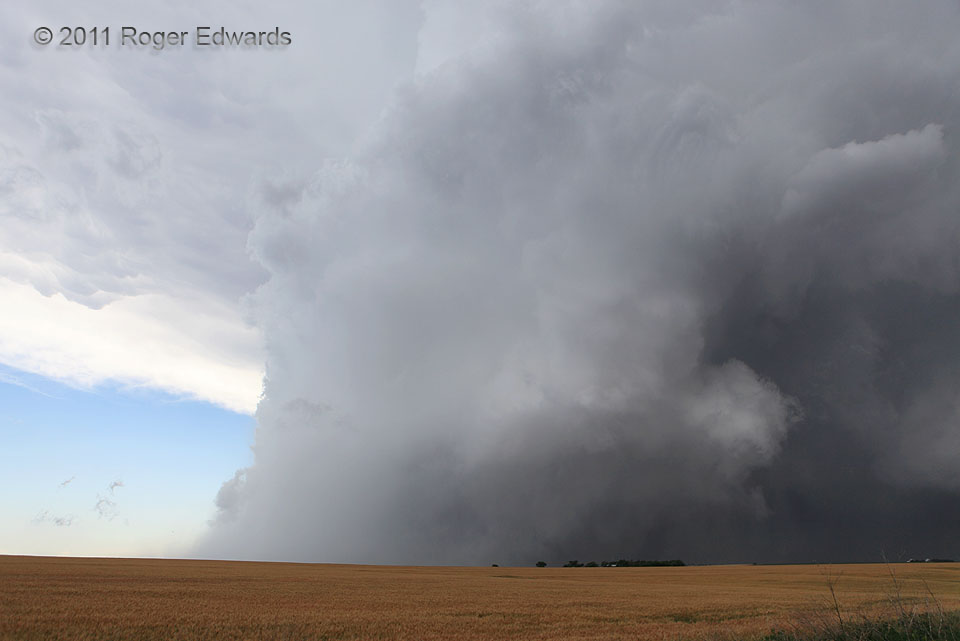Truly one of the strangest supercell presentations I’ve ever witnessed—this storm formed in mid-morning near the center of an occluding low-level cyclone and stayed anchored near the low for several hours through the noon hour into mid-afternoon, trekking across much of northwestern Kansas into southern Nebraska, nearly 100 miles behind the dryline. It survived by ingesting a narrow tongue of moist inflow to its north and northeast, along a bent-back occluded front. This wide-angle view looks toward the southwest at the northward-moving supercell. Do you see the huge tornado? Look behind that row of trees in the distance. That rain-wrapped wedge, often totally hidden from view, was one of several substantial tornadoes in a sequence within the main mesocyclone, which you can see as a tilted, surprisingly narrow convective chimney sloping away and to the right, well into the storm’s upper reaches. The updraft tower isn’t much wider than the visible tornado funnel below cloud base! In fact, since the tower was rotating visually at very rapid speeds, one plausibly can argue that we are seeing the tornado in middle and upper levels too—or at least, the tornado cyclone. Rarely can one get such a stripped-down, skeletal view of a very wet supercell producing a big tornado. To magnify the weirdness, we saw several small, dusty, mostly brief tornadoes away from the mesocyclone during the lifespan of the big one. The secondary tornadoes quickly formed and died beneath transient, front-flank, cloud-base circulations to the right of the photo. Notice also the storm’s lack of convection in its rear (left) side, and the sharp clearing behind that intense, divergent core of rear-flank precip.
3 S Long Island KS (20 Jun 11) Looking SW
39.901, -99.5354
